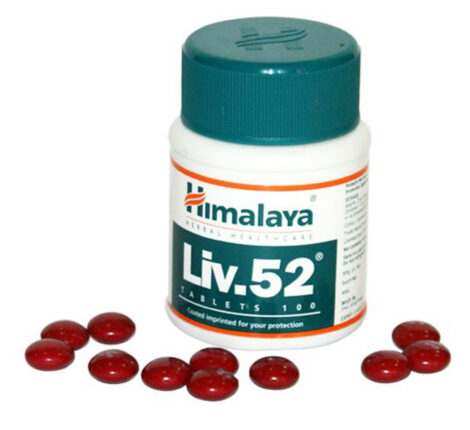Critical Analysis of Joint Ownership of Copyright
It goes without saying that author of the work is the first owner and has complete ownership in a copyrighted work. If the work is musical, dramatic, literary then the person who has made it or composed it will be considered as the owner of the creative work; the producer will be considered as the owner in case of a cinematograph film.
So, now the question might pop in our head- “What if there are more than one music composers for a particular song?”
In such a case, who will be considered as the owner of the copyrighted work? Can there more than one author for a particular work? Can more than one person get benefitted for the same work?
The reply is positive. Yes, Joint ownership is allowed for particular copyright work. Joint ownership of copyright will be entrenched at a point when at least two creators put up a creative work with a purpose to fuse their contributions into inseparable or related parts, the work is viewed as joint work, and the creators are viewed as joint owners of the copyright.
Let’s understand this while taking into account the most well-known illustration of a joint work. Suppose a book or article has more than two writers. In any case, if a book is composed principally by one writer, however, another writer contributes a particular section to the book and is given kudos for that part, such a work wouldn’t amount to joint work because the commitments aren’t indivisible.
The U.S. Copyright Office regards joint copyright proprietors to have an equivalent option to enrol and authorize the copyright. Except if the joint proprietors settle on a composed consent actually, each copyright proprietor has the privilege to exploit the copyright, given that the other copyright proprietors get an equivalent portion of the returns.
Well, the joint ownership concept might not be that easy as it seems above—the concept of joint ownership quite complicated in any dealing.
The doctrine of Joint Ownership
Cases where creation of a copyrighted work has more than one author or creators the “rights and obligations” of the creators may not be so self-evident. The “joint ownership” precept includes a “sharing” of rights, albeit ideally, particularly if the publisher is a co-creator, it is a purposeful sharing of rights.
Rights and Duties of Joint Owner of Copyright
If a work counted under the copyright law as a work of joint owners, the co-creators or colleagues may allot the rights and obligations of copyright work among themselves. Nevertheless, since no conventional agreement is needed between the co-creators or colleagues, a legitimate relationship of joint ownership may happen even without the purpose of the individual creators to make a work of the joint owner. Accordingly, if no joint ownership arrangement has been formalized, it will be assumed that the accompanying standards will be applied.
– Every co-creator will possess an equivalent proprietorship share in the work. This will happen regardless of whether one of the co-creators has contributed a more substantial amount of the work than the other co-creators.
– Every co-creator will possess a “unified” interest in the whole work.
– No creator is allowed to grant an exclusive right to any third party for their creation, without the consent of their co-creators. But may give non-exclusive rights to the work to outsiders.
– Every co-creator should record any benefits acquired from the exploitation of the copyrighted work by any other co-owner.
– A co-creator has the privilege to delegate his/her proprietorship share in the work to an outsider or to hand down his/her share in work to his/her heirs.
– Every co-creator will be qualified for equivalent credit for the work upon its distribution or publication.
Legal Perspective behind the Joint Ownership of Copyright
Under Section 2(z) of the Indian Copyright Act, “work of joint authorship” refers to work “produced by the collaboration of two or more authors in which the contribution of one author is not distinct from the contribution of the other author or authors.“
As, from the above discussion, it is evident that a co-owner does not have exclusive rights to use a copyrighted work without the permission of other co-owner of such a work.
In the case of, Nav Sahitya Prakash And Ors. vs Anand Kumar And Ors AIR 1981 All 200, Hon’ble Allahabad High Court cited the Halsbury Law and stated:
“One joint author cannot reproduce the work himself, or grant a license to others to reproduce it, without the consent of other author or authors, but may by himself take proceedings for infringement against the third party.”
In the case of, Length Arts Private Limited v/s Century Communications Ltd. & Another Arbitration Petition No.196 of 2008, Hon’ble Bombay High Court is of view that “when a particular work involves more than one owner then, one of the co-owner cannot single-handedly exploit such work preferably the work must be used jointly by the proprietors of such work.”
Joint ownership under the statute has been deciphered to imply that one proprietor can’t practice any privilege in the copyrighted work without the consent of other proprietors. Subsequently, however, Indian law doesn’t stretch out proprietorship in the derivative to a joint creator of an underlying work who did not commit in doing the work, the making of derivate would even now require the consent of all joint creators of the underlying work.
Ownership and Licensing
It is quite a strenuous task to decide who is the owner of the copyrighted work, for the very same reason, it is hard to obtain a license to use a copyrighted work. In simple words, in India to exploit a work which involves more than one owner, it is required to obtain a license from all the owners of such a copyrighted work.
Under Indian law, joint proprietors of copyright can’t abuse the copyright separately or exclusively; they can do so mutually. No joint proprietor can allocate, transfer, assign or license or in some other way, utilize the copyright without the permission of the other joint proprietors.
Concept of Joint Ownership under the International Convention
Article 7bis of the Berne Convention provides for the term of protection for literary and artistic work of the joint owners – it is calculated from the death of last surviving author.
The Indian Scenario relating to the joint ownership of copyright
In the case of joint authorship, the protection of copyrighted work is calculated from the death of the last author, i.e., 60 years from the death of the last surviving owner of the work.
In the landmark case of Najma Heptulla v. Orient Longman Ltd. And Ors. in which the subject matter of joint authorship was discussed, the Hon’ble Delhi High Court held that:
“The process by which the book was written by the two was that Azad, during his lifetime, dictated and gave notes to Prof. Kabir and out of that Prof. had composed a book which was approved by Azad. Hence, both were joint authors because there was joint authoring in furtherance of a common design. There was an evident active and close collaboration between the two. Hence, joint authorship exists.“
Brief facts of the case: –
-Maulana Abdul Kalam Azad was the author of a book named “India Wins Freedom” and Prof. Humayun Kabir was the composer of the book.
– Abdul Kalam Azad died before the book was published in the market. Maulana Abdul Kalam Azad dictated his experience to Prof. Kabir, who composed the same and gave the shape of a book.
– Prof. Kabir entered into an agreement with Orient Longman publisher to get the book published.
– The legal heirs of Abdul Kalam Azad contented that publishing right lies exclusively to the legal heirs of the author and Prof. Kabir has no right to agree to get the book published and get benefitted.
Issues raised in the Court of Law:
– Who is the actual author of the book India Wins Freedom?
Prof. Kabir has put the experience of Abdul Kalam Azad into words. Kalam used to describe his experiences in the Urdu language, and Prof. Kabir took the effort to make notes and later translate the word into the English language and finally composed a book out of it.
So, here all the credit cannot be given to a single person. Both have equally put their hard work in the book. Abdul Kalam Azad has contributed the material, and Prof. Kabir took the pain to put into words the experiences of Abdul Kalam Azad. Basically, here both of them will be considered as the co-authors because the Copyright Act gives equal importance to the subject matter as well as the language of the book.
– Whether Prof. Kabir has any right to get the book published?
It is quite apparent that the authors have the right to get their work published provided they have the consent of their co-author’s. But here, in this case, Abdul Kalam Azad expired before the book could be published, so the authorship right was vested with legal heirs of Abdul Kalam Azad, the consent of legal heirs was required to get the work published. The acceptance of royalties by the legal heirs of Abdul Kalam Azad clearly portrayed their consent to get the work published.
Conclusion
From the above discussion, we can reach to a conclusion that joint owners of literary, artistic work, i.e. work which include the effort of more than one person, both of them enjoy equal rights to exploit the work; if not one of them waive of their right. Consent of the other author plays an important role – joint owners of the work have exclusive rights over their work. No one can solely be benefited of the work where it includes the labour of two individual; all the decision regarding the copyrighted work must be taken by the joint owners mutually.
Copyright Act gives credit not only to the composer of the artistic work but also to the contributors who helped in forming the work. In simple words, every person who has a big helping hand in the work must be given the due credit for his efforts.




